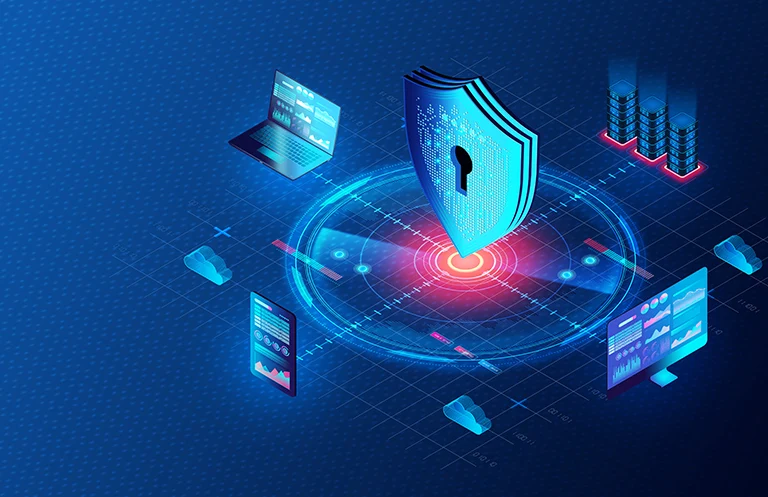Considering the fact that 1.5-2% of the retail industry’s revenue is eaten up by shrinkage losses, we’re looking at a colossal amount unduly wasted, resulting in lower bottom lines. In 2015, it amounted to about US $50 Billion for the US retail industry, as per a study report by University of Florida. Avoiding shrinkage by applying technologies such as advanced Video Analytics in conjunction with existing systems can significantly boost up the retail industry profits.
Predominantly, there are three major categories of shrinkage, which include operational errors, external theft, and malpractices, as well as internal (employee) theft and malpractices. Most of these can be considerably reduced using a sophisticated Video Management System with in-built, retail-specific advanced Video Analytics.
Common types of retail shrinkages/losses and how Video Analytics helps reduce them
1. Operational Errors / Inefficiencies:
There are several reasons of loss through operational inefficiencies, including damage through poor/excessive handling, incorrect stacking, rodents, equipment malfunction (refrigerator failure etc.), and more. We’ll be focussing on a few of them where Video based solutions, in conjunction with other technologies, can help.
- Spillage: Spillage can stem from improper handling by the employees/customers or a willful act of misconduct by either. This can also be an outcome of some packaging issues. Spillage not only brings down the hygiene value, but could also prove to be a reason for accidents in the store, potentially causing litigation as well as revenue loss.Advanced Video Analytics is instrumental in identifying spilled colored liquids and can raise the alerts to the relevant authorities along with location details for a quick fix.
- Spoilage: This is caused by a multitude of reasons such as inefficient inventory management, lack of leak-proof communication/alerts on important events regarding storage of perishables and items with low to medium shelf-age. This is not only hazardous for the brand value, but comes in with a significant amount of monetary losses and potentially reduced customer base. Even bigger worry is the FDA compliance when it comes to consumables.
Although Video Analytics finds a lesser application compared to temperature tags and other connected control solutions, it does contribute towards better inventory and warehouse management, indirectly leading to a substantial reduction in spoilage during storage as well as during transit. This also helps in generating inventory recouping alerts within stores as well as warehouses, combined with RFID tags and/or other wireless technologies.
Why #VideoAnalytics in #Retail is not just about shrinkage loss prevention via @einfochipsltd
2. Employee Malpractices:
Employee malpractices constitute losses occurred as a result of an unprofessional and deceitful act of employees in the organization. These include the following:
- Employee theft is one of the major concerns contributing to shrinkage losses (about 35% of total shrinkage losses) and unfortunately is grossly underestimated by the retailers. This issue is very tricky to handle, considering employee morale holds high importance to the retailers as employers. One cannot exhibit too much of a suspicious behavior towards own employees by scanning/frisking them in and out of the store or have too strict manual monitoring.This is where Video Analytics plays an important role as it not only distinguishes the employees from the customers, but can also subtly track the movements in the high-security zones by using tripwire kind of algorithms. The cameras on the cash counters or in each aisle can track P.o.S transactions. It also helps in preventing theft losses by employees during transit/storage by having an IP-based Wi-Fi enabled cameras with Video Analytics on the transportation fleets and warehouses.
- Sweet hearting / Collusion: This case of ‘watchman letting in the thief’ occurs when cashiers befriended by some customer(s) help them to execute the malpractice of letting out merchandise with lesser bill amount or assisting in carrying products without/partial billing. This also includes discount abuse, refund abuse, and more. These can be prevented by having a VMS with video analytics that can communicate with RFID readers at entry gates/RFID tags, etc.
3. External Malpractices:
These may include shrinkages that cannot be attributed to operational errors or employee misconduct, but are caused by malpractices executed by external parties.
- Customer Theft: This is the most common cause of shrinkage and can be easily dealt with using some common video analytics algorithms such as loitering detection, suspicious activity detection, shelf sweep alert, as well as smart baggage scanning etc.
Additional benefits of Video Analytics for retailers
A sophisticated video management system along with retail-specific video analytics can not only prevent security threats, but also saves a lot of money for retail chains by avoiding shrinkage in multiple ways. This directly reflects in the bottom line of the stores with a healthy RoI for investment in a VMS. However, the best results are obtained when such a system is capable of talking to other on-premise systems such as EPOS, RFID scanners, central management software, inventory management module, EAS labels etc. as it gives a double-check on the parameters tracked for avoiding shrinkage.
When we look at the value that video analytics brings to retailers, it’s not just the about shrinkage reduction but way more than that. The inputs that video analytics provides for further Business Intelligence is a potential game-changer for the industry.
1. Traffic-Related Intelligence
It’s a widespread practice for retailers to track the effectiveness of attracting traffic at the store as a whole and a few specific areas in the store. The most common ones are the number of visitors, unique visitors, exposure rate (store area wise analysis), % conversion of passer-by’s, visit duration etc. However, very few industry players have been successful in getting it accurate and effective enough, considerably improving sales. With technical advancements in video analytics, we can implement facial recognition, people counting, and dress code identification in combination to come up with fairly accurate and actionable inputs for business analytics.
2. Engagement and Conversion
The next important BI parameter after traffic is Conversion, as it has a direct impact on the revenue. Some of the important analytics features that give a good insight into these are total visitors per store area, time spent per store area, per shopper yield and its relation with the dwell time. Video analytics features such as heat map, dwell analysis etc. can provide plenty of insight into the above metrics, helping the retailers make informed decisions to boost up sales.
HANDPICKED RELATED CONTENT:
How Retail Video Analytics Enhance In-Store Product Promotions
3. Demographics and Personalized Content Provision
Personalization is one of the buzzwords when it comes to high standards of service. In large retail chains, customization is one of the difficult things to automate. However, with the eye-tracking camera embedded in smart shelves or the signage screens, we can deliver highly customized content in the form of advertisements in various store areas and influence the buying behavior in a meaningful way. This can work in close tandem with demographic analysis, based on video analytics. This also helps in boosting up the sales, based on targeted demographics in terms of gender, age, and the interest areas captured by means of in-store behavior.
4. Employee Efficiency Improvement:
As previously discussed, operational inefficiencies and employee malpractices cause a great deal of loss to the retail bottom line. Video analytics not only provides effective surveillance, but also helps streamline operations by tracking staff productivity, attendance, staff availability based on peak demand hours and areas etc.
Conclusion
Video Analytics is not just about having a sophisticated VMS for monitoring the store entrants and generic security & surveillance, but it can do much more than that, for a retail chain, if deployed in a right manner. It can help retailers avoid shrinkage losses, at the same time devise the product placement strategies, strategize on effective operations, and provide the best possible personalized service to the customers.
eInfochips provides advanced Video Analytics for multiple industries, covering the most common use cases for surveillance, security, and customer intelligence. We have a strong competency in developing actionable video analytics solutions and image processing algorithms for any custom requirements.












